AE2S Nexus has begun mailing or hand delivering the 2024 edition of the Annual Utility Rate Survey. We would like to thank the 226 participants this year. We received responses from 115 systems serving populations 5,000 and greater, 57 systems serving populations less than 5,000, and 54 Regional Rural systems. Survey data was solicited from utilities in Iowa, Minnesota, Montana, Nebraska, North Dakota, South Dakota, Utah, Wisconsin, and Wyoming.
Two survey reports have been prepared: one for systems serving 5,000 people or more, including systems in the Minneapolis/St. Paul metro area; and a second survey for systems that serve fewer than 5,000 people, as well as Regional Rural Water Systems. In appreciation for volunteering to provide survey information, each participant receives a hard copy of the complete report.
Reported 2024 Rate Increases
Of the survey respondents serving greater than 5,000 people, 29 are among those in the Minneapolis/St. Paul metro area that receive wastewater services from the Metropolitan Council – Environmental Services. Results from the metro area respondents indicate that 100% of the responding systems implemented an increase to water rates in 2024. For the same group, 97% of wastewater systems and 93% of stormwater systems increased rates in 2024.
Among the 86 respondents from the non-metro systems serving populations greater than 5,000 people, 71% reported water rate increases, and 73% reported wastewater rate increases in 2024, while 29% of stormwater systems increased rates. The average percent increase for each utility by population is shown in Figure 1 for metro and non-metro systems serving 5,000 or more people.
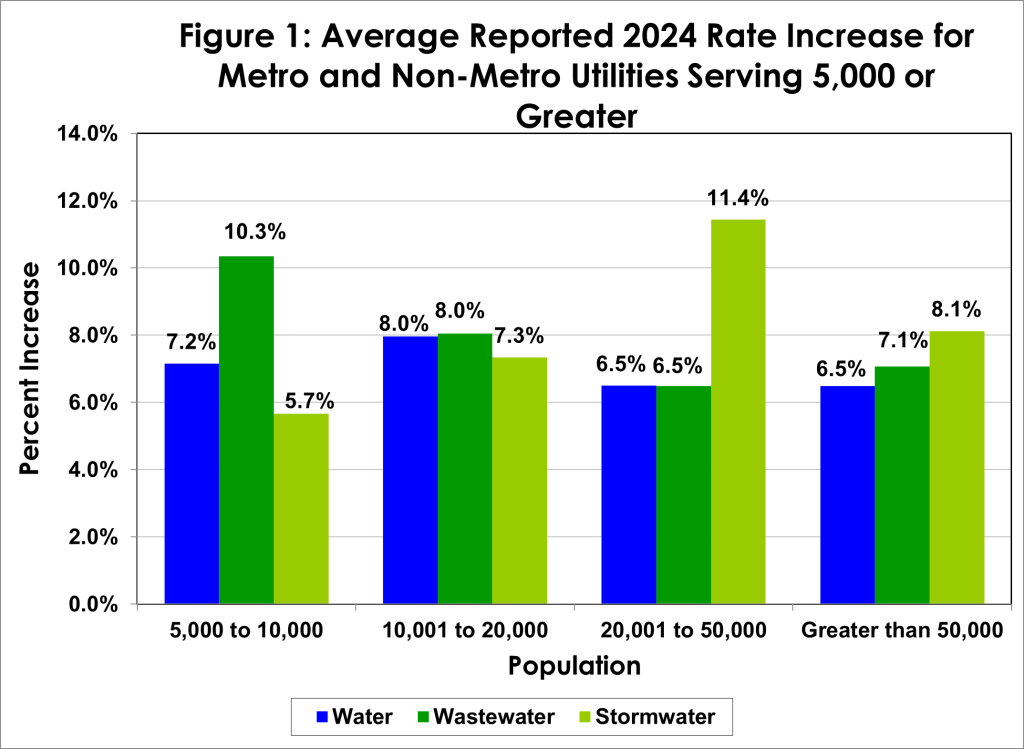
Overall, the average increases in 2024 for water, wastewater, and stormwater systems serving 5,000 people or more were 7.0%, 8.1%, and 8.7%, respectively. For comparison, in 2023 the average rate increases for systems of this size were 7.5% for water, 6.8% for wastewater, and 10.1% for stormwater.
For systems serving fewer than 5,000 people, 58% of respondents reported an increase to water rates, 53% increased wastewater rates, while 14% also reported a stormwater rate increase in 2024. For the small systems that reported increases in 2024, Figure 2 illustrates the average increases by population. Among the systems serving fewer than 5,000 people, the average reported increases for 2024 were 7.6% for water, 7.6% for wastewater, and 15.2% for stormwater. Water, wastewater, and stormwater rate increases reported last year were 5.7%, 12.9% and 11.0%, respectively.
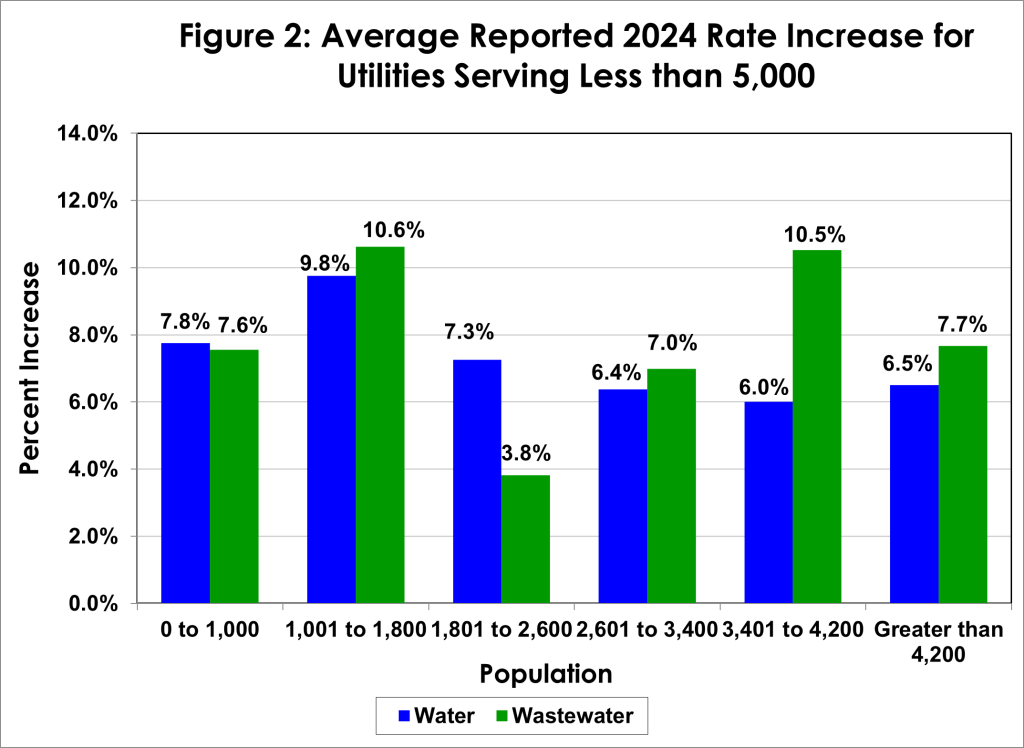
Figure 3 illustrates the 2024 average monthly water and wastewater charges by population grouping for all municipal survey respondents, based on an average monthly use of 6,000 gallons. Of the municipal respondents in 2024, 83% of 2024 respondents also participated in 2023. Overall, the average monthly water and wastewater bill for 6,000 gallons increased by 2.1% from 2023, while the median bill for 6,000 gallons increased by 3.3%.
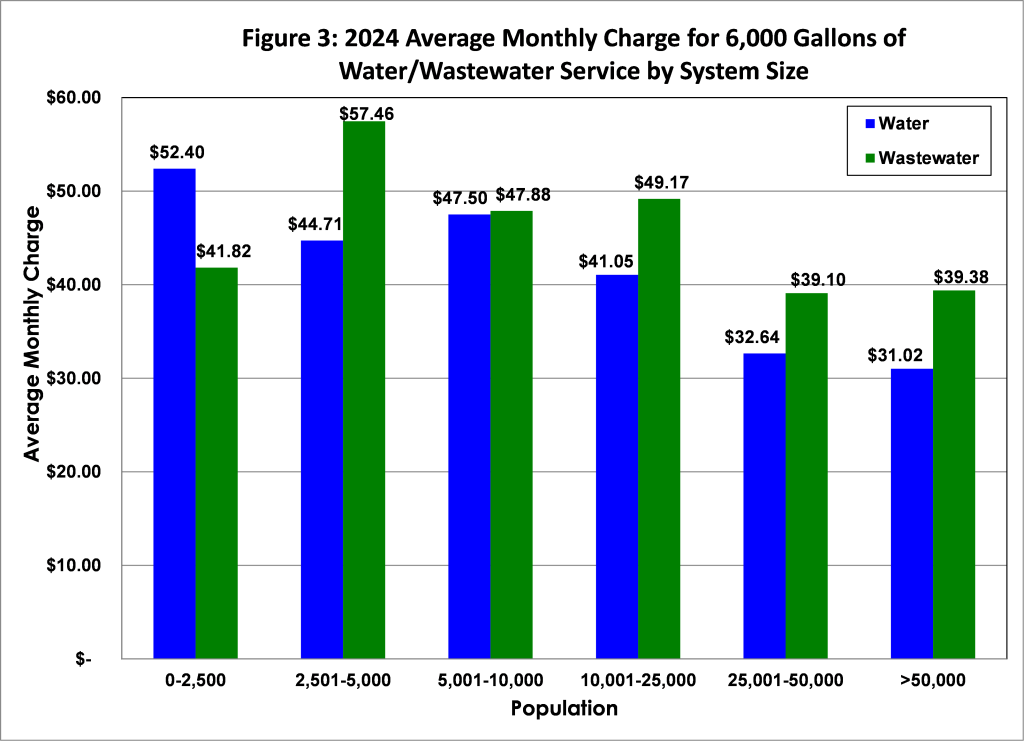
A summary of historical results reported by Regional Rural Water System rate survey participants since 2013 is provided in Figure 4, which shows the average median reported monthly charges for 6,000 gallons of water each year. The number of respondents to the survey each year is also indicated.
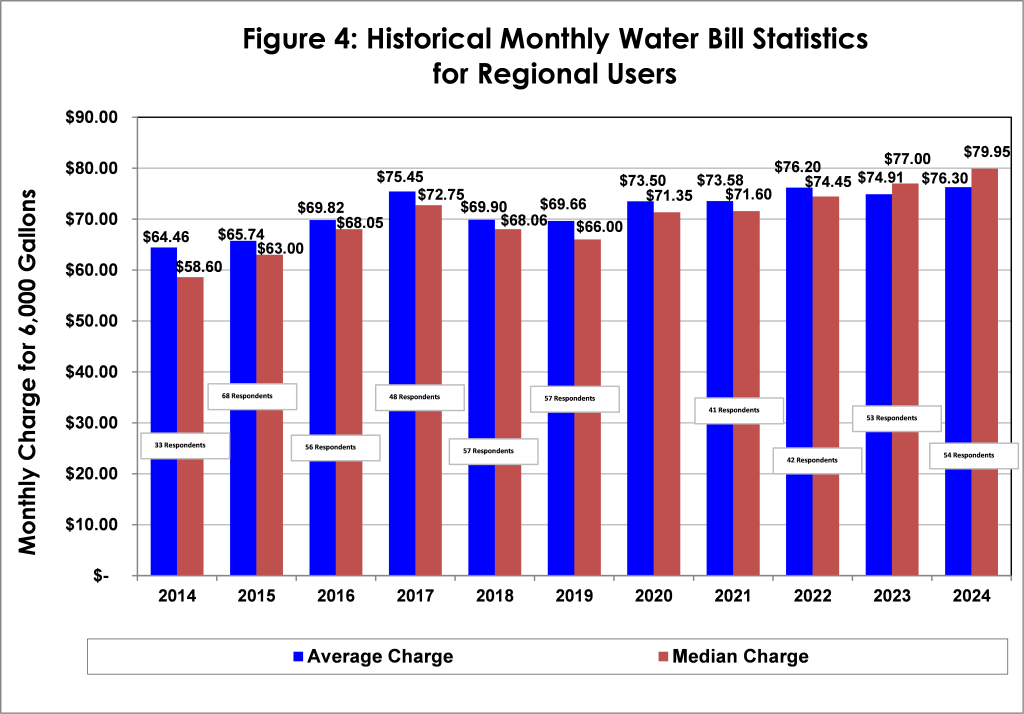
Continued Upward Trend in Water & Wastewater Charges
From a historical perspective, the average water and wastewater monthly charge for 6,000 gallons in our region from 2004 to 2023 has climbed at a rate higher than historical inflation values, based on the Consumer Price Index for All Urban Consumers (CPI-U). Figure 5 illustrates the change in average monthly charges for 6,000 gallons of water and wastewater service since 2004* for systems serving greater than 5,000 people (including the Minneapolis/St. Paul metro area). Figure 6 indicates similar information for systems serving less than 5,000 people since 2006*. The results illustrate the challenge that utility managers and policy makers continue to experience in meeting financial demands on system operations, while striving to minimize user charge increases.
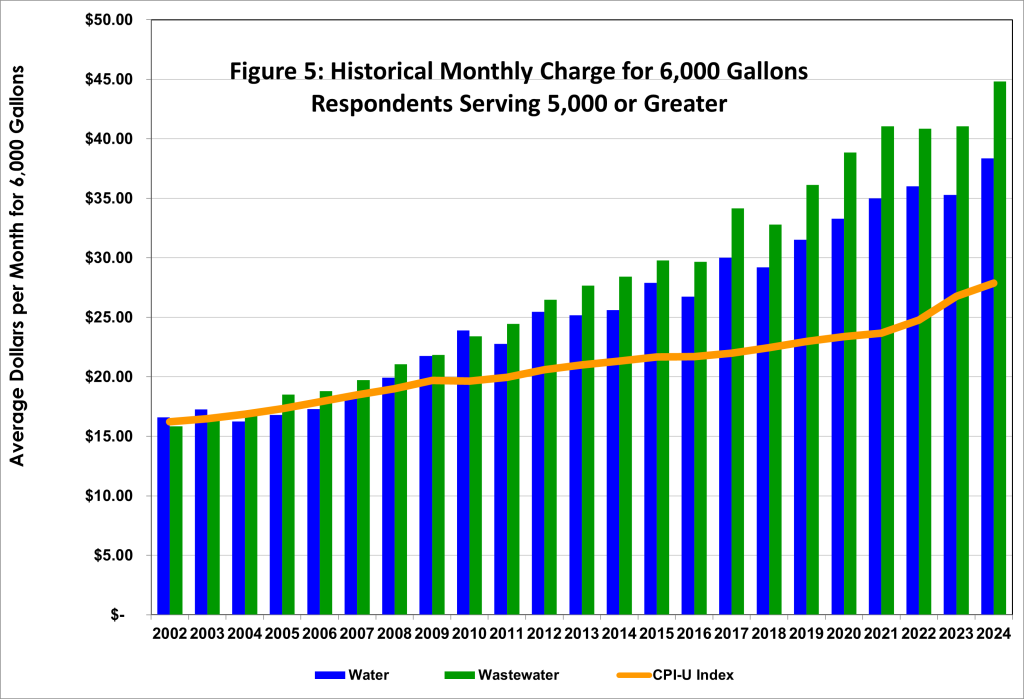
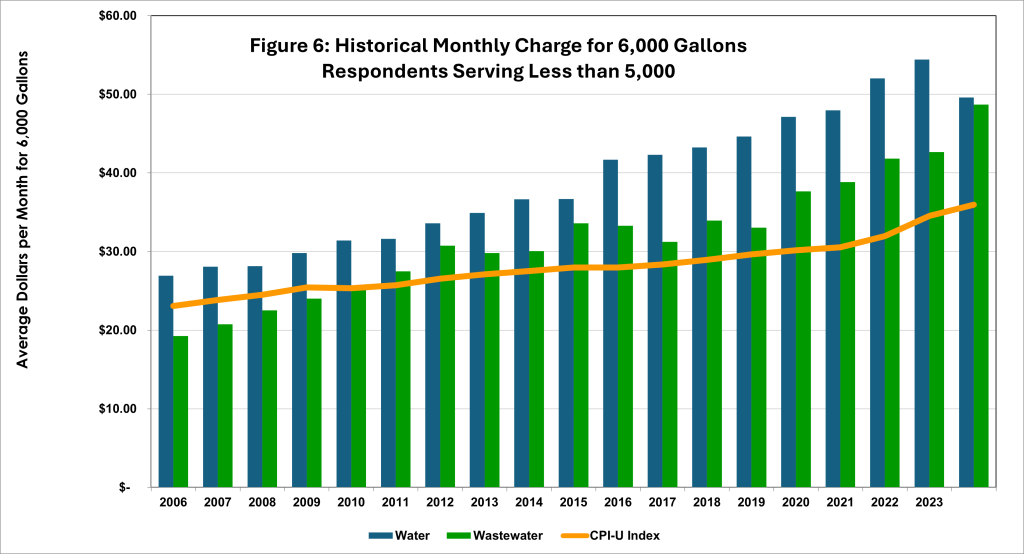
Note: The number of participants and geographical expanse of the annual rate survey has grown substantially since 2004 and 2006.
